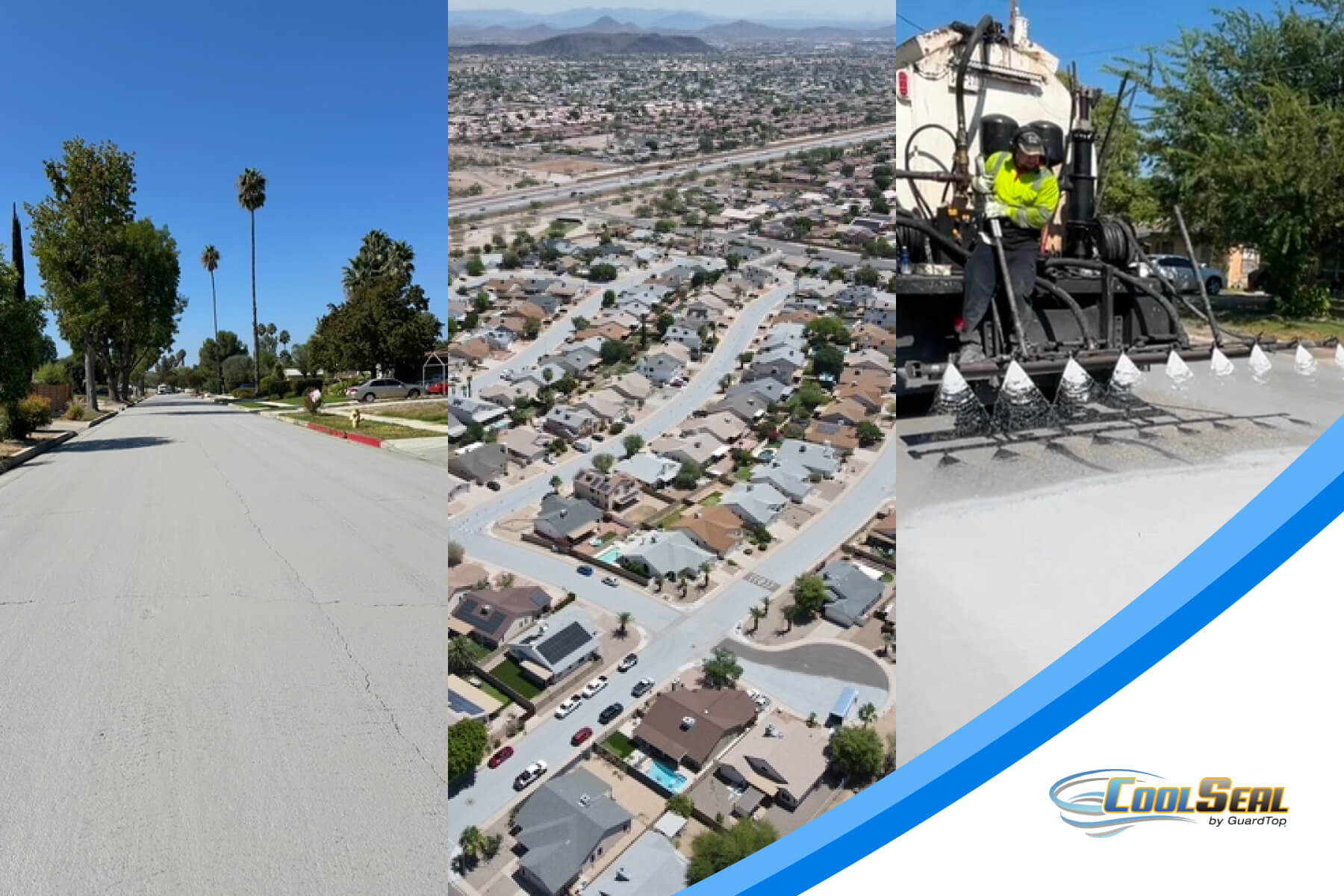As featured by Fox 10:
New technology could be cooling down the city of Phoenix – it's called "cool pavement" and it reduces the heat in urban areas covered in asphalt and concrete.
The city has been working on this project for about a year to see if the technology is actually cooling down certain neighborhoods in the city. Cool pavement is a technology that's applied to asphalt and concrete to cool it down and the city chose certain neighborhoods to try it out.
Rubben Lolly, the city's special projects administrator, says, "We want to improve the liveability of our residents in this city."
How does the technology work?
It's reflective and has a lighter color and chemical properties. It turns sunlight back toward the atmosphere rather than absorbing heat as dark asphalt does.
"The idea is that it would reduce the amount of heat in the pavement so nighttime temperatures will be reduced," Lolly said.
It has the potential to mitigate urban heat islands, save energy in buildings and reduce demand for air conditioning in buildings.
Heat islands are described by the Environmental Protection Agency as "urbanized areas that experience higher temperatures than outlying areas. Structures such as buildings, roads, and other infrastructure absorb and re-emit the sun’s heat more than natural landscapes such as forests and water bodies."
In an October 2020 report, Heather Murphy, a Street Transportation Department spokesperson, said Phoenix is applying cool pavement coating to nine sites representing different urban characteristics, from shaded streets to open lots. The applications are expected to be completed by the end of the month.
Reducing ground temperatures can have direct benefits by lowering air temperatures, which can help with heat-related illnesses, air quality and energy use.
"Too much heat affects people. This is the part we can play to improve that," Lolly said.
What's were the results?
On Tuesday night, the city of Phoenix and Arizona State University researchers released their findings on the technology.
They measured air, surface and radiant temperature four times a day on extreme heat days. Those measurements were compared to areas with regular asphalt.
Researchers also asked people living in cool pavement neighborhoods about their experiences.
They found that the surface temperature with cool pavement was 10 to 12 degrees cooler in the afternoon than regular asphalt. The air temperature was also about a .3 of a degree lower during the day at 6 feet in the air.
They say the reason for the small difference may be due to shade, the pavement's use over smaller spaces, and the mixing of air from nontreated areas of the neighborhood. However, the pavement had lower surface temperatures at all times of the day compared to regular asphalt.
Other findings included:
- Heat exposure for humans during the afternoon hours were 5.5 degrees Fahrenheit higher due to surface reflectivity, but felt similar to walking on a typical concrete sidewalk.
- Surface solar reflectivity declined over 10 months from a range of 33 to 38 percent to a range of 19 to 30 percent across all eight neighborhoods. Untreated asphalt has a reflectivity of only 12 percent.
The cool pavement does cost more than traditional asphalt but researchers say the benefits so far outweigh the difference.
This article was originally published by Fox 10 Phoenix. Read the full article here.





